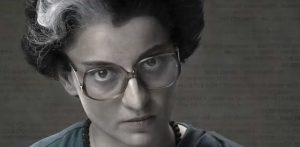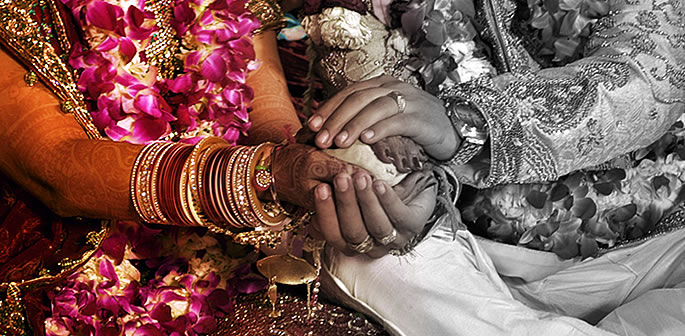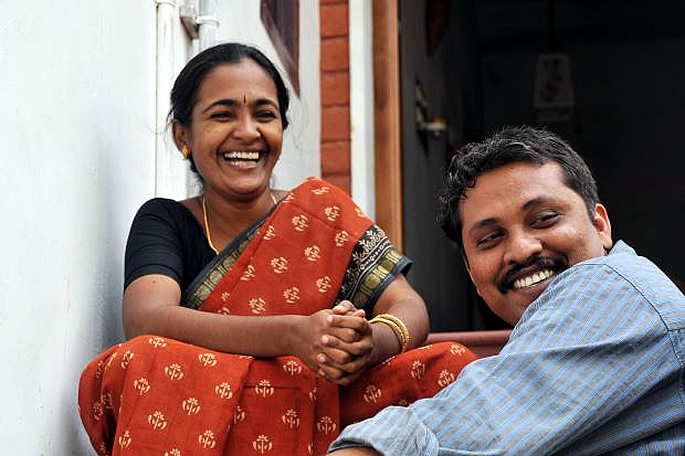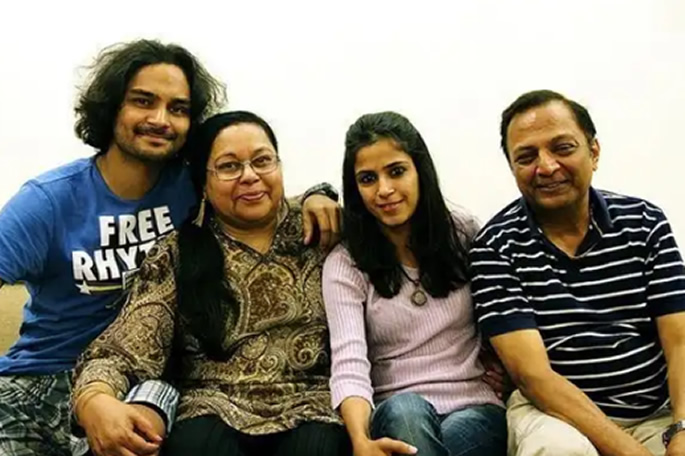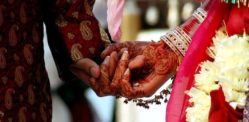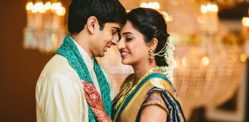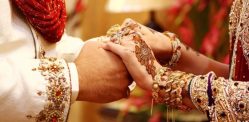"Though both families knew about us, accepting it wasn’t easy."
The term ‘inter-caste marriages’ makes one think about ‘love’ and its social disapproval and acceptance. With Indians having a variety of cultural beliefs, this can bewilder a person who does not understand the reasons for objection to such marriages.
Most parts of India believe that marrying into a different caste or clan will ‘dilute’ their rituals and values.
The common scenario of objection is usually from the higher caste parts of Indian society and families where the son or daughter wishes to marry a lower caste person.
Lower caste people in India are commonly referred to as Dalits. The term means “the oppressed” and members of this section of Indian society gave themselves the name in the 1930s.
Dalits are people who are from the lowest social status group in India and also known as ‘untouchables’. Officially, such groups are referred to as Scheduled Castes. They are historically associated with poor economic status and members of lower caste trades such as cleaners, servants, maids, and helpers.
Inter-caste marriages are not openly practised in India. Couples who have gone against these cultural beliefs, not to marry within the same caste, have faced numerous challenges.
Cases of different caste couples not allowed to proceed with their ‘love marriage’ have experienced either forced marriage with a person irrespective of their choice or worse, murder in the name of ‘honour killing’.
Interestingly, in many rural and suburban parts of Haryana and Uttar Pradesh, cultural traditions actually follow that marriages should be allowed only if the man and the woman are of different castes. Same caste (or gotra) relates them as brother and sister and therefore, unacceptable.
Researchers at Princeton University found that Indian inter-caste marriages are the highest in Goa (26.67%) and lowest in Tamil Nadu (2.59%).
Here are some real Indian inter-caste marriage stories where the lovers chose each other over their family’s demands and ego, for the sake of their own marital union.
Tilakam and Kathir
Tilakam and her lower caste husband, Kathir, worked together in an NGO in Madurai when they fell in love and decided to marry. But Indian society around them was outraged and didn’t allow the so-called ‘break in tradition’.
However, Tilakam’s father was opposed to these cultural practices and defended his daughter’s choice against everyone else. His progressive thinking saved the couple from being separated and helped them get married under the Special Marriages Act.
They have been married for over 18 years now and it seems they couldn’t be happier.
Kathir proudly accepts being a Dalit as his identity. He has formed a group for defending the rights of other Dalits to wed partners outside their caste and to live wherever they wish.
Kranti Bhavana and Sundeep Kumar
Sundeep Kumar, a Scheduled Caste belonging to the Dhobi caste, and Kranti Bhavana, an upper-caste Kayasth met while studying for their MBBS (Bachelor of Medicine and Bachelor of Surgery) qualification at Patna Medical College. They were then together at the All India Institutes of Medical Sciences (AIIMS).
While they married in 2007, they were a couple for about a decade prior to tying the knot.
Opposition to the marriage did take place from both sides, despite them being qualified medical professionals. Kranti recalls:
“Even my father, a sociology professor, whom I always perceived as being above caste or creed, asked me to give it more thought. My mother and grandmother were completely against the union though they accepted that Sudeep was bright and a good human being.”
However, Kranti had support from her brothers:
“My brothers respected Sudeep and supported our relationship.”
Sundeep says:
“Though both families knew about us, accepting it wasn’t easy. This is not what one would expect in the 21st century.
“In Bihar, both in school and in college, everyone I met would first ask me about my caste. It was so humiliating.”
Speaking about the differences, Kranti says:
“Despite his academic excellence, he never received the same recognition that I did for a similar performance in academics.”
Monika and Vikramjeet
Monika Godhara was born to a family of rich Jatt farmers in the village of Kaluwana in Haryana while Vikramjeet Singh is a Dalit from Bijjuwali, Punjab.
They first came to know each other in a Haryana Roadways bus, which Monika used to take to her school in a nearby village. Their love blossomed on this daily bus journey. They knew their love was ‘taboo’ and kept it a secret from everyone.
But word eventually got out and spread to Monika’s mother, who got Monika engaged to a wealthy Haryana Police Inspector.
On the other hand, Vikramjeet’s family too didn’t want any trouble with an upper caste family. Despite their hopelessness, both still tried to convince their families but the situation only got worse.
With both families not agreeing, they took the difficult option to elope and get married.
If they hadn’t, they would have become another example of honour killing at the hands of Monika’s family, led by her brother.
Whilst on the run, they stayed in different hotels to avoid being tracked down and kept no contact with friends or family.
Monika’s parents accused Vikramjeet of forcing Monika into the marriage and lodged a case against him which turned them into fugitives.
Life got very difficult and sustaining their survival became a challenge. Recalling this, Monika says:
“There were moments when we thought of committing suicide. But we had no option but to fight it out.”
In 2006, they received support from a Haryana state government scheme which promotes inter-caste marriages. They were awarded Rs 26,000 to help them with daily expenses.
Still, in fear of being caught, they kept moving to different locations until they settled in Sirsa in 2009.
The couple then retaliated and lodged an FIR against their families and friends. Monika’s parents wanted her to withdraw the case due to the police action. Monika agreed and retrieved her education certificates from them in return.
From the day they ran, they never thought their nightmare would last for over a decade.
To this day Monika is still a light sleeper in fear of being attacked despite having a young son and studying.
Pleased with the recent Supreme Court order instructing khap panchayats (community elders) not to interfere in marriages, Monika says:
“If they are really serious about ending the caste system, they should provide a government job to women who marry outside her caste.”
Ashok Jain and Neena
Ashok Jain married Neena, a Bengali Hindu, after meeting her in Buenos Aires in the mid-1970s, while both of their fathers worked in India’s Foreign Service.
However, the marriage was not without its problems despite both families knowing each other.
When their relationship from friendship turned into a romantic one, they were forced to end the relationship by their families.
Initially, they decided not to go against their family’s wishes. Ashok says:
“We had decided that she would go her way and see boys and I would go my way and see other girls and agreed to call each other when we decided to get married to someone else.”
But this did not work for them and one day they announced that they were going to marry each other.
They married at an Arya Samaj temple, a Hindu sect which completely admonishes the caste system.
Ashok’s family, which practises Jainism, an ancient Indian religion which has an emphasis non-violence, were not going to readily accept this marriage.
When Ashok announced his marriage to his parents, their anger against his decision resulted in them beating him for getting married to a Hindu Brahmin girl.
He was thrown out of the house and immediately disowned as a son.
Both Ashok and Neena lived away from their families for five years, after which Ashok’s parents gradually came round and accepted Neena. They got together on their son’s first birthday.
Ashok and Neena fought to survive the backlash of their inter-caste marriage and Ashok says:
“The most important thing which spoke to me – above love and all that – was that I had to live for my own identity.”
G. Vivek and Saroja
G. Vivek, a Telangana MP and a Mala, met Saroja, a Brahmin. They fell in love and then got married in an Arya Samaj temple in 1990.
Their friends and families were taken aback by this union. But they fought it and stuck together for the years ahead.
54-year-old Vivek laughs and says:
“There is no upper caste or lower caste at home. My wife is the boss.”
He recalls that many people from his community were worried that he may alienate himself from them. However, Saroja worked hard at developing these relationships and managed to win people over.
Saroja’s father is a vastu practitioner from an orthodox Brahmin family. Therefore, she wanted to still follow her ways especially in terms of her diet restrictions being a Brahmin. She says:
“My only condition was in terms of diet. I continue to be a vegetarian and he’s a non-vegetarian. Our four children are totally non-vegetarian.”
This inter-caste marriage shows that if you believe in each other the marriage will find its way into the heart of the community and having respect for each other’s values and traditions matters immensely, especially if your backgrounds do differ.
Divya and Ilavarasan
N Divya is an upper caste Vanniyar girl who fell in love with a Dalit youth, E. Ilavarasan. The couple had no choice but to elope and marry without the consent of their family members.
When their societies came to know, they started taunting Divya’s father Nagarajan for supporting his daughter in this so-called ‘crime’.
Her village’s kangaroo court ordered Divya to return home without her husband. She refused. Soon after that, her father committed suicide.
A few months passed and Divya was again ordered to return home. This time it was her mother who had accused Ilaravasan of detaining Divya.
Divya felt torn between her family and husband.
In July 2013, Divya told the court she would go with her mother “for the time being”.
She also stated there were no problems with her husband or with her mother-in-law. However, she was unsettled by the incident of her father’s death.
So, Ilaravasan waited for her hopefully.
But back at her parent’s house, Divya lost all hope and made it clear that she would not be returning to him.
The very next day, the young man was found dead by the railway tracks of Dharmapuri.
Was it a suicide or a murder? The question remains unanswered.
Geddam Jhansi and Subramaniam Amancharla
In 1989, Geddam Jhansi a Dalit Mala woman married Subramaniam Amancharla, a Brahmin.
The wedding was a low-key affair where the couple exchanged garlands with about 30 relatives and friends present.
However, sadly, there was no one at the wedding from Subramaniam’s side. So, he informed his family by sending them a photo and note of his marriage to a lower caste woman.
Jhansi’s uncle had arranged the marriage to Subramaniam. He was a social reformer and a proponent of Telugu culture.
Jhansi, therefore, was not going to go against the will of her elders and accepted to marry Subramaniam. Recalling the time, Jhansi says:
“But I trusted them and, sure enough, everything has turned out right. We were following Ambedkar’s ideology and hoping for the best.”
Subramaniam’s family did eventually come round to accepting the marriage. Despite their earlier objections.
Subramaniam is a law professor in Guntur and Jhansi runs a social welfare organisation that is fighting for the rights of Dalit women, like herself.
They have a son called Jabali, who is now over 23 years-old. When he was a child, school authorities were not pleased when his parents refused to identify him as either a Brahmin or a Dalit.
Jalabi uses the surname Amancharla but declares himself as ‘other caste’ on his documents.
V. Shankar and Kausalya
Another tragic story of an inter-caste marriage from Tamil Nadu.
Kausalya, a 19-year-old Piramalai Kallar girl, met V. Shankar, a 22-year-old Pallar guy in 2014:
“Shankar made me realise that dignified and respectful behaviour is the way of love,” quoted Kaushalya.
They knew they will not get the permission to marry. So, Kausalya left her home, met up with Shankar and they eloped.
But, soon after departure, Kausalya’s father filed a case against Shankar for kidnapping her.
They somehow managed to marry in the Palani Padha Vinayakar Temple.
In March 2016, a gang of five bike riders hacked Shankar and Divya with sharp long knives in broad daylight.
Shankar was unable to sustain his injuries and died. Kaushalya lived. The brutal attack was recorded on CCTV footage and went viral all over the internet.
The police arrested 11 people accused of being guilty, and six of them were convicted, including Kaushalya’s father, Chinnasamy. They continuously defended their actions in the name of ‘honour killing’.
Aanav Pandey and Meena Kumari
Aanav Pandey, a Brahmin, met Meena Kumari, a Dalit, at a college in Chandigarh while studying. As they both got to know each other, their romance blossomed into a loving relationship.
Both felt that there was no way they were going to marry anyone else. But they also knew that an inter-caste marriage between them would be a huge struggle.
Aanav’s Brahmin family were totally against the marriage. They told him that he had to make a choice between Meena and the family.
When he chose Meena, Aanav’s family disowned him and had nothing to do with him anymore.
In comparison, Meena’s family were the opposite. They were open-minded and agreed for the marriage to take place.
Recalling the time, Meena says:
“It was very hard for Aanav. I wanted to be there for him during this very difficult time he was facing, being disowned by his parents. It was a very emotional time for him. My family made sure he did not feel alone in it all.”
Aanav still invited many of his relatives from his side of the family. But not one person showed up at the wedding. He got married to Meena without a single member of his family present.
Aanav says:
“Okay, I thought, my parents will not come but I was surprised to see not one relative showed up to my marriage. Even people who grew up with me snubbed me.”
It has been over five years since Aanav and Meena tied the knot. They have two children and live happily.
Aanav still makes an effort with his family and visits them once a year on his own. To this day, they still have not accepted Meena, despite them having grandchildren.
Peeyush Misra and Neetu Rawat
A 27-year-old lawyer, Peeyush Misra, who is a Brahmin met and fell in love with Neetu Rawat, who was of the lower Chamar caste when they were studying at Lucknow University.
Talking about the caste system in India, Peeyush says: “The institution of caste survives in India because of political motives.”
Speaking about his marriage to Neetu, he says:
“You must have the courage to take the initiative. Be ready to defy social barriers and there is nothing to stop a union like ours.”
His inter-caste marriage did cause some uproar amongst his relatives and friends. But it was his father who fully supported them and was very much in favour of the children deciding their own paths in life.
Feeling the battle was worth it, both Neetu and Peeyush say:
“We have been married for two years now and consider ourselves the happiest couple on earth.”
Well, these are some of the touching stories among many others. Even Bollywood actors like Shahrukh Khan and Gauri, Aamir Khan and Kiran Rao, Shahid Kapoor and Mira Rajput have tied their knots despite different castes and faiths.
Can it be said that times are changing in India? Somewhat, yes.
Things were different 20 years ago. The percentage of people marrying outside their castes then was comparatively lower to the percentage of people marrying today.
Also, inter-caste marriages have been much more prevalent in the cases of marriage after a divorce.
The Supreme Court has initiated a pilot project on examining the situation in the districts of Haryana and Uttar Pradesh.
In these Indian states, the attacks by khap panchayats on young couples were common. On the growing instances of honour killings, Chief Justice Dipak Mishra says:
“When two people decide to marry, they are adults and you are nobody to interfere.”
Even government schemes like the ‘Dr Savita Ben Ambedkar Inter Caste Marriage Scheme’ aim to help the couples who have taken a ‘socially bold step’ to settle down in the initial phase of their married life.
The scheme gives incentives to every inter-caste marriage involving a Dalit. Initially, in 2014-15, merely five couples were given approximately Rs 50,000 which, in 2015-16, rose to 72 couples receiving Rs 5 lakhs.
Studies reveal that incidences of inter-caste marriages in India have grown to about 10% of total marriages. So it can be said, that yes, times are changing.
However, it is required that the Indian government takes more initiatives to minimise the suffering of the young couples who pay a price just for the sake of falling in love.














